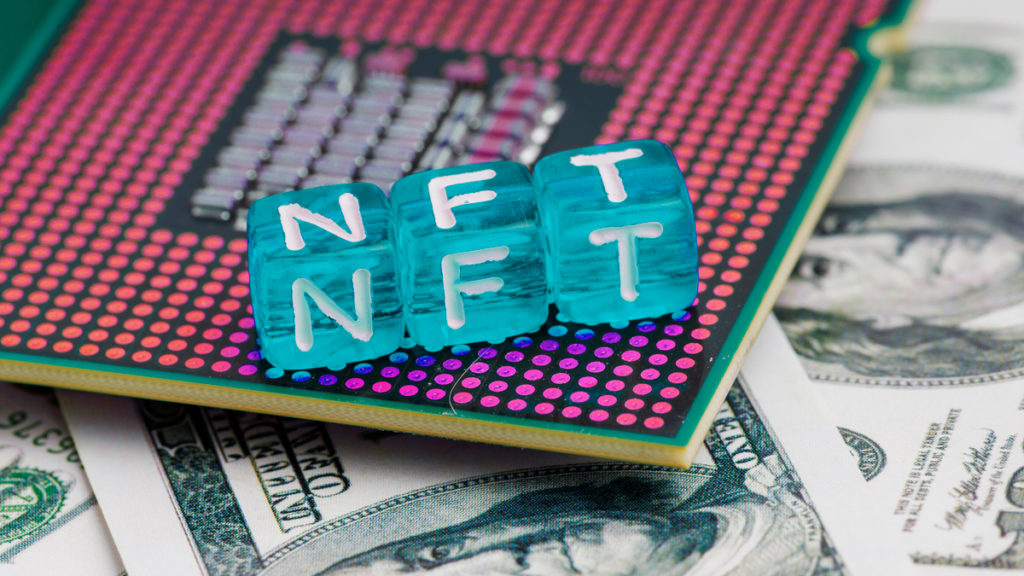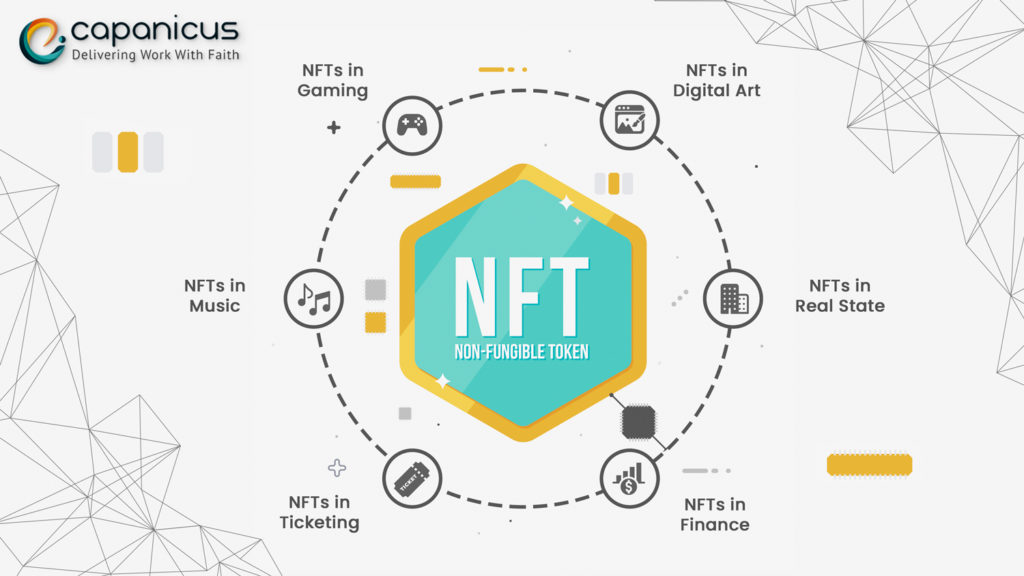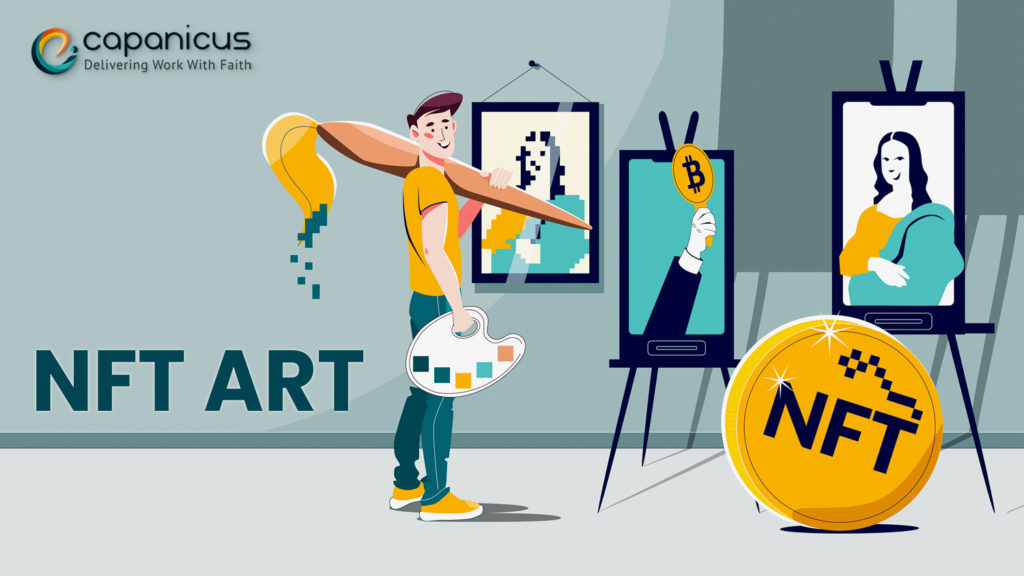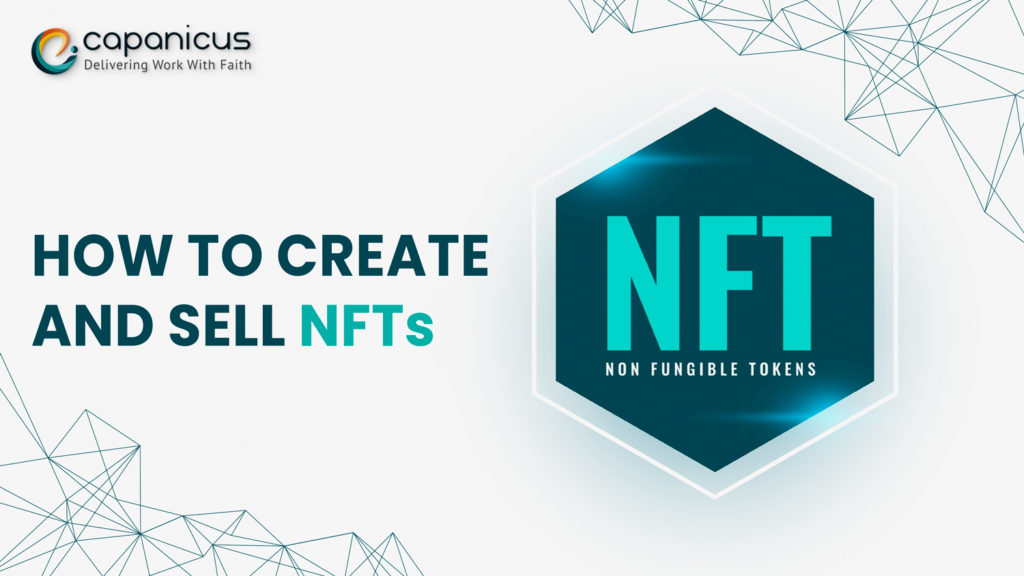
NFT stands for Non-Fungible Token. It is a type of digital asset that represents ownership or proof of authenticity of a unique item or piece of content, such as artwork, collectibles, music, videos, and virtual real estate, among others. NFTs are built on blockchain technology, typically using platforms like Ethereum. Each NFT possesses a distinct digital signature that distinguishes it from other tokens, making it unique and indivisible. This uniqueness sets NFTs apart from cryptocurrencies like Bitcoin or Ethereum, which are fungible and can be exchanged on a like-for-like basis.
The value of an NFT is driven by factors such as scarcity, demand, and perceived value by collectors or enthusiasts. NFTs have gained significant popularity and have been used for various purposes, but it’s worth considering the environmental impact of the energy-intensive blockchain technology used to support NFT transactions.
A beginner’s guide to NFT
If you’re new to the world of NFTs, here’s a beginner’s guide with some specific points to help you understand the basics:
What is an NFT? – NFT stands for Non-Fungible Token. It represents a unique digital asset that cannot be replicated or exchanged on a like-for-like basis, unlike cryptocurrencies such as Bitcoin or Ethereum.
Examples of NFTs – NFTs can encompass a wide range of digital items, including artwork, music, videos, virtual real estate, collectibles, and more. They provide proof of ownership and authenticity for these digital assets.
Blockchain technology – NFTs are built on blockchain technology, which is a decentralized and transparent digital ledger. Ethereum is a popular blockchain platform used for creating and trading NFTs, although other blockchain networks can also support them.
Minting NFTs – To create an NFT, the digital asset is transformed into a unique token through a process called minting. This involves creating a smart contract on the blockchain that contains the ownership details and metadata of the asset.
Buying and selling NFTs – NFTs are typically bought and sold on digital marketplaces designed explicitly for trading. These marketplaces provide a platform for artists, creators, and collectors to transact and exchange NFTs. Popular NFT marketplaces include OpenSea, Rarible, and NBA Top Shot.
Ownership and authenticity – The ownership and transaction history of NFTs are recorded on the blockchain, ensuring transparency and proof of authenticity. Buyers of NFTs receive a digital certificate of ownership as proof of their ownership rights.
Potential value – The value of an NFT can vary depending on factors such as demand, scarcity, and the perceived value of the digital asset. Some high-profile NFT sales have fetched significant sums of money, but it’s important to remember that the value of NFTs can be volatile.
Considerations – When engaging with NFTs, it’s crucial to research and understand the associated risks, such as potential scams, plagiarism, and the environmental impact of blockchain technology.
What is the variance between fungible and Non-fungible?
Fungible and non-fungible are terms used to describe two different types of assets. Fungible assets are interchangeable and identical to each other, meaning they can be exchanged on a one-to-one basis. For example, money is fungible because one dollar bill is equivalent to another dollar bill. Commodities like oil or gold are also considered fungible as one unit is indistinguishable from another.
On the other hand, non-fungible assets are unique and cannot be mutually substituted. Each non-fungible purchase has distinct properties, which set it apart from others in its class. An example of a non-fungible asset is a piece of artwork, where each piece has its characteristics and value.
Simply put, fungible assets are interchangeable and identical, while non-fungible assets are unique and distinct from each other.

Why does NFT have an NFT Value?
NFTs have value for several reasons:
- Uniqueness: NFTs represent something unique, whether it’s a one-of-a-kind artwork or a limited edition collectible. The concept of scarcity adds value to these digital assets since they cannot be replicated or exchanged on a like-for-like basis.
- Ownership and authenticity: NFTs provide proof of ownership and authenticity for digital assets. Blockchain technology ensures transparency and immutability, allowing buyers to verify the legitimacy of an asset and establish its provenance.
- Connection to creators: NFTs often have a direct connection to the creators or artists behind them. This can include renowned artists, musicians, celebrities, or influencers. The association with a well-known creator can increase the perceived value of an NFT.
- Collectibility: NFTs tap into the human desire to collect unique items. People have a history of valuing and collecting physical assets, such as art, sports memorabilia, or rare coins. NFTs allow for similarly collecting digital assets.
- Potential for future value: NFTs may gain value over time due to factors like increasing demand, the artist’s growing popularity, or the significance of the artwork or item in cultural or historical contexts. Some buyers see NFTs as speculative investments with the potential for appreciation.
- Exclusivity and social status: Owning a rare or notable NFT can hold social status and exclusivity. Just as owning luxury goods or unique physical collectibles can convey status, owning certain NFTs can carry a similar sense of prestige.
However, it’s essential to note that the NFT market is still developing, and prices can be highly volatile. As with any market, the value of NFTs is determined by supply and demand dynamics, and individual preferences and perceptions of value can vary significantly.
What makes NFT valuable in the Market?
The value of NFTs is also driven by the potential for future value appreciation. As demand for certain NFTs increases over time, their value can rise as well. This can be influenced by factors such as the growing popularity or recognition of the artist or creator behind the NFT, significant milestones or events associated with the digital asset, or its cultural and historical significance.
The collectibility aspect of NFTs plays a crucial role in their value. Just as people have long-valued physical collectibles like trading cards or rare stamps, NFTs tap into the human desire to collect unique items. The limited availability and exclusivity of certain NFTs make them desirable for collectors, increasing their value in the market.
The sense of exclusivity and social status associated with owning certain NFTs is another factor that contributes to their value. Owning rare or notable NFTs can convey a sense of prestige and hold cultural cachet within specific communities or circles.
It’s important to note that the value of NFTs is subjective and can be influenced by various factors specific to individual preferences and market trends. The NFT market is still evolving, and prices can be highly volatile. As with any investment or collectible item, it’s crucial to conduct thorough research and consider personal factors before assigning value to an NFT.
What is Crypto Art? Know everything about NFT Art

Crypto art is a type of digital art that uses blockchain technology to prove ownership. Crypto art, like an original Matisse, can have its authenticity certified via a non-fungible token (NFT). The work’s one-of-a-kindness is what makes it precious, as opposed to typical digital art, which can be simply copied.
Here’s everything you need to know about NFT art:
- Indivisible: Each NFT artwork is one-of-a-kind and cannot be replicated or divided into smaller units. The unique nature of NFTs allows artists to create scarcity and rarity in the digital realm, which can increase their value among collectors.
- Artist Ownership and Royalties: NFTs enable artists to retain ownership and control over their artwork. They can also incorporate smart contracts into NFTs, which can automatically enforce royalties for creators. This means that artists can receive a percentage of subsequent sales whenever their artwork is resold in the secondary market.
- Verification and Authenticity: NFTs provide a digital certificate of authenticity, allowing buyers to verify the originality and provenance of the artwork. This eliminates concerns about counterfeit or unauthorized reproductions, as the blockchain records the entire ownership history and verifies the legitimacy of the NFT.
- Marketplaces and Secondary Sales: NFT art is primarily bought and sold on online marketplaces specifically designed for NFTs. These platforms facilitate direct transactions between artists and buyers and often include features like auctions or fixed-price sales. Additionally, secondary sales can occur in the aftermarket, allowing collectors to trade or resell NFT artwork to other interested parties.
- Potential for New Revenue Streams: NFT art has introduced a new way for artists to monetize their digital creations. It has opened up opportunities for artists who previously struggled to earn income from their digital work, as NFTs provide a direct path to connect with buyers and collectors around the world.
- Controversies and Environmental Concerns: The NFT art market has faced criticism for its potential environmental impact, particularly due to the high energy consumption associated with blockchain transactions. Additionally, concerns have been raised about the speculative nature of the market and the potential for copyright infringement.
While NFT art has gained significant attention and popularity in recent years, its market is still evolving, and its long-term implications on the art world are yet to be fully understood. NFT art has gained significant attention in recent years due to its ability to provide proof of scarcity and ownership for digital creations, addressing the long-standing issue of digital art being easily replicable and shared without proper attribution or compensation to the creators. NFTs allow artists to create limited-edition digital artwork or even sell single copies, ensuring the art’s authenticity and uniqueness.
NFT art can encompass various forms, including digital paintings, animations, videos, music, virtual reality experiences, and more. Artists tokenize their work by minting NFTs on a blockchain platform, usually using Ethereum’s blockchain. These NFTs contain metadata that stores information about the artwork, including the artist’s name, description, and a reference to the actual art file, which may be stored on a decentralized file storage system.
NFTs enable artists to sell their work directly to collectors on blockchain marketplaces, facilitating secure transactions and providing artists with a transparent system for royalties. Additionally, NFTs allow artists to earn royalties whenever their art is resold in the secondary market, ensuring ongoing revenue streams. Despite its growing popularity, NFT art has also faced criticism related to its environmental impact due to the energy consumption associated with blockchain transactions. It is a rapidly evolving field with ongoing discussions surrounding its long-term potential and challenges.
How to create, buy, or sell an NFT?

To create, buy, or sell an NFT (Non-Fungible Token), you can follow these general steps:
- Creating an NFT:
– Determine the content: Decide what digital asset or artwork you want to tokenize as an NFT. It could be an image, video, music, or any other unique digital item.
– Choose an NFT platform: Various platforms are available for creating NFTs such as Ethereum-based platforms like OpenSea, and Rarible, or Tezos-based NFT marketplace Platform development like Hic et Nunc.
– Create your NFT: Set up an account on your chosen platform, follow their guidelines, upload your digital asset, provide relevant details, set a price, and mint (create) your NFT.
- Buying an NFT:
– Choose an NFT marketplace: Select a reputable marketplace like OpenSea, SuperRare, or Nifty Gateway where NFTs are listed for sale.
– Set up a digital wallet: Create a digital wallet that is compatible with the blockchain platform of the NFT you want to buy. Popular options include MetaMask, Trust Wallet, or Coinbase Wallet.
– Link your wallet: Connect your digital wallet to the marketplace and deposit funds (usually in cryptocurrency) that you’ll use to purchase NFTs.
– Browse and purchase NFTs: Explore the marketplace, find the NFT you’d like to buy, place a bid, or choose the “Buy” option, and follow the instructions to complete the transaction.
- Selling an NFT:
– Choose a NFT marketplace Platform marketplace: Similar to buying, select a marketplace where you’d like to list your NFT for sale. Research and find a platform that aligns with your needs.
– Set up your wallet: As a seller, you need to set up a digital wallet compatible with the blockchain of the chosen marketplace.
– List your NFT: Follow the NFT platform’s instructions to create a listing for your NFT. Provide relevant details, set a price, and choose the listing duration.
– Wait for buyers: Your NFT will be visible to potential buyers. If someone decides to buy it, the transaction will be executed following the platform’s process.
What is NFT Minting?
NFT minting refers to the process of creating a unique digital asset or token on a blockchain. NFT stands for Non-Fungible Token, which means it is a one-of-a-kind digital item that cannot be replicated or replaced. When you mint an NFT, you create a digital certificate of ownership for a specific piece of content, such as artwork, music, videos, or even virtual real estate. This process typically involves uploading the digital file to a platform that supports NFTs, paying a fee, and then the blockchain network records the ownership and transaction history of that specific NFT marketplace Platform.
How to avoid NFT Scams?
To avoid NFT scams, consider following these steps:
A. Research the project
B. Verify authenticity
C. Scrutinize the smart contract
D. Be cautious of deals that seem too good to be true
E. Purchase from reliable platforms
F. Double-check wallet addresses
G. Don’t share private keys or personal information
H. Stay informed and updated
Final Thoughts
Although NFT is still in its early stages, the technology has huge potential. NFTs will likely transform how we connect with various businesses, from revolutionizing the events industry to allowing artists and musicians to sell their products. NFTs are here to stay as an essential component and are expected to grow substantially in the next few years.
As with any new technology coming into the market, it’s advisable to educate yourself further and approach NFTs with proper guidance with the help of capanicus.


